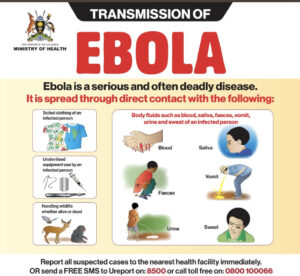Cardiovascular Glossary (I-P)
Idiopathic – No known cause.
Immunosuppressants – Any medicine that suppresses the body’s immune system. These medicines are used to minimize the chances that the body will reject a newly transplanted organ, such as a heart.
Impedance plethysmography – A noninvasive diagnostic test used to evaluate blood flow through the leg.
Incompetent valve – Also called insufficiency; a valve that is not working properly, causing it to leak blood back in the wrong direction.
Infarct – The area of heart tissue permanently damaged by an inadequate supply of oxygen.
Infective endocarditis – An infection of the heart valves and the innermost lining of the heart (the endocardium), caused by bacteria in the bloodstream.
Inferior vena cava – The large vein returning blood from the legs and abdomen to the heart.
Inotropes – Positive inotropes: Any medicine that increases the strength of the heart’s contraction. Negative inotropes: Any medicine that decreases the strength of the heart’s contraction and the blood pressure in the vessels.
Internal mammary artery – A durable artery in the chest wall often used as a bypass graft in coronary artery bypass surgery.
Intravascular echocardiography – A combination of echocardiography and cardiac catheterization. A miniature echo device on the tip of a catheter is used to generate images inside the heart and blood vessels.
Introducer sheath – A catheter-like tube that is placed inside a patient’s vessel during an interventional procedure to help the doctor with insertion and proper placement of the actual catheter.
Ischemia – Decreased blood flow to an organ, usually due to constriction or obstruction of an artery.
Ischemic heart disease – Also called coronary artery disease and coronary heart disease, this term is applied to heart problems caused by narrowing of the coronary arteries, thereby causing a decreased blood supply to the heart.
Ischemic stroke – A type of stroke that is caused by blockage in a blood vessel.
Jugular veins – The veins that carry blood back from the head to the heart.
Left ventricular assist device (LVAD) – A mechanical device that can be placed outside the body or implanted inside the body. An LVAD does not replace the heart—it “assists” or “helps” it pump oxygen-rich blood from the left ventricle to the rest of the body.
Lesion – An injury or wound. An atherosclerotic lesion is an injury to an artery due to hardening of the arteries.
Lipid – A fatty substance that is insoluble (cannot be dissolved) in the blood.
Lipoprotein – A lipid surrounded by a protein; the protein makes the lipid soluble (can be dissolved) in the blood.
Low density lipoprotein (LDL) – The body’s primary cholesterol-carrying molecule. High blood levels of LDL increase a person’s risk of heart disease by promoting cholesterol attachment and accumulation in blood vessels; hence, the popular nickname “bad cholesterol.”
Lumen – The hollow area within a tube, such as a blood vessel.
Magnetic resonance imaging (MRI) – A technique that produces images of the heart and other body structures by measuring the response of certain elements (such as hydrogen) in the body to a magnetic field. MRI can produce detailed pictures of the heart and its various structures without the need to inject a dye.
Maze surgery – A type of heart surgery that is used to treat chronic atrial fibrillation by creating a surgical “maze” of new electrical pathways to let electrical impulses travel easily through the heart. Also called the Maze procedure.
Mitral stenosis – A narrowing of the mitral valve, which controls blood flow from the heart’s upper left chamber to its lower left chamber. May result from an inherited (congenital) problem or from rheumatic fever.
Mitral valve – The structure that controls blood flow between the heart’s left atrium (upper chamber) and left ventricle (lower chamber).
Mitral valve prolapse – A condition that occurs when the leaflets of the mitral valve between the left atrium and left ventricle bulge into the atrium and permit backflow of blood. The condition can be associated with progressive mitral regurgitation.
Mitral valve regurgitation – Failure of the mitral valve to close properly, causing blood to flow back into the heart’s upper left chamber (the left atrium) instead of moving forward into the lower left chamber (the left ventricle).
mm Hg – An abbreviation for millimeters of mercury. Blood pressure is measured in units of mm Hg—how high the pressure inside the arteries would be able to raise a column of mercury.
Monounsaturated fats – A type of fat found in many foods but mainly in avocados and in canola, olive, and peanut oils. Monounsaturated fat tends to lower LDL cholesterol levels, and some studies suggest that it may do so without also lowering HDL cholesterol levels.
Mortality – The total number of deaths from a given disease in a population during an interval of time, usually a year.
Murmur – Noises superimposed on normal heart sounds. They are caused by congenital defects or damaged heart valves that do not close properly and allow blood to leak back into the chamber from which it has come.
Myocardial infarction – A heart attack. The damage or death of an area of the heart muscle (myocardium) resulting from a blocked blood supply to the area. The affected tissue dies, injuring the heart. Symptoms include prolonged, intensive chest pain and a decrease in blood pressure that often causes shock.
Myocardial ischemia – Occurs when a part of the heart muscle does not receive enough oxygen.
Myocarditis – A rare condition in which the heart muscle becomes inflamed as a result of infection, toxic drug poisoning, or diseases like rheumatic fever, diphtheria, or tuberculosis.
Myocardium – The muscular wall of the heart. It contracts to pump blood out of the heart and then relaxes as the heart refills with returning blood.
Myxomatous degeneration – A connective tissue disorder that causes the heart valve tissue to weaken and lose elasticity.
Nitroglycerin – A medicine that helps relax and dilate arteries; often used to treat cardiac chest pain (angina).
Necrosis – Refers to the death of tissue within a certain area.
Noninvasive procedures – Any diagnostic or treatment procedure in which no instrument enters the body.
NSTEMI – Non-ST-segment-elevation myocardial infarction. The milder form of the 2 types of heart attack, an NSTEMI does not produce an ST-segment elevation on an electrocardiogram. See also STEMI.
Obesity – The condition of being significantly overweight. It usually applies when a person is 30% or more over ideal body weight. Obesity puts a strain on the heart and can increase the risk of developing high blood pressure and diabetes.
Occluded artery – An artery in which the blood flow has been impaired by a blockage.
Open heart surgery – An operation in which the chest and heart are opened surgically while the bloodstream is diverted through a heart-lung (cardiopulmonary bypass) machine.
Pacemaker – A surgically implanted electronic device that helps regulate the heartbeat.
Palpitation – An uncomfortable feeling within the chest caused by an irregular heartbeat.
Pancreas – The organ behind the stomach that helps control blood sugar levels.
Pancreatitis – Swelling (inflammation) of the pancreas.
Paralysis -Loss of the ability to move muscles and feel in part of the body or the whole body. Paralysis may be temporary or permanent.
Paroxysmal supraventricular tachycardia (PSVT) – An occasional rapid heart rate (150-250 beats per minute) that is caused by events triggered in areas above the heart’s lower chambers (the ventricles). See also supraventricular tachycardia (SVT).
Patent ductus arteriosus – A congenital defect in which the opening between the aorta and the pulmonary artery does not close after birth.
Patent foramen ovale – An opening between the left and right atria (the upper chambers) of the heart. Everyone has a PFO before birth, but in 1 out of every 3 or 4 people, the opening does not close naturally, as it should, after birth.
Percutaneous coronary intervention (PCI)– Any of the noninvasive procedures usually performed in the cardiac catheterization laboratory. Angioplasty is an example of a percutaneous coronary intervention. Also called a transcatheter intervention.
Percutaneous transluminal coronary angioplasty (PTCA) – See angioplasty.
Pericarditis – Inflammation of the outer membrane surrounding the heart. When pericarditis occurs, the amount of fluid between the two layers of the pericardium increases. This increased fluid presses on the heart and restricts its pumping action.
Pericardiocentesis – A diagnostic procedure that uses a needle to withdraw fluid from the sac or membrane surrounding the heart (pericardium).
Pericardium – The outer fibrous sac that surrounds the heart.
Plaque – A deposit of fatty (and other) substances in the inner lining of the artery wall characteristic of atherosclerosis.
Platelets – One of the three types of cells found in blood; they aid in the clotting of blood.
Polyunsaturated fat – The major fat in most vegetable oils, including corn, safflower, sunflower, and soybean oils. These oils are liquid at room temperature. Polyunsaturated fat actually tends to lower LDL cholesterol levels but may reduce HDL cholesterol levels as well.
Positron emission tomography (PET) – A test that uses information about the energy of certain elements in your body to show whether parts of the heart muscle are alive and working. A PET scan can also show if your heart is getting enough blood to keep the muscle healthy.
Postural orthostatic tachycardia syndrome (POTS) – A disorder that causes an increased heart rate when a person stands upright.
Premature ventricular contraction (PVC) – An early or extra heartbeat that happens when the heart’s lower chambers (the ventricles) contract too soon, out of sequence with the normal heartbeat.
Prevalence – The total number of cases of a given disease that exist in a population at a specific time.
Pulmonary – Refers to the lungs and respiratory system.
Pulmonary embolism – A condition in which a blood clot that has formed elsewhere in the body travels to the lungs.
Pulmonary valve – The heart valve between the right ventricle and the pulmonary artery that controls blood flow from the heart into the lungs.
Pulmonary vein – The blood vessel that carries newly oxygenated blood from the lungs back to the left atrium of the heart.


